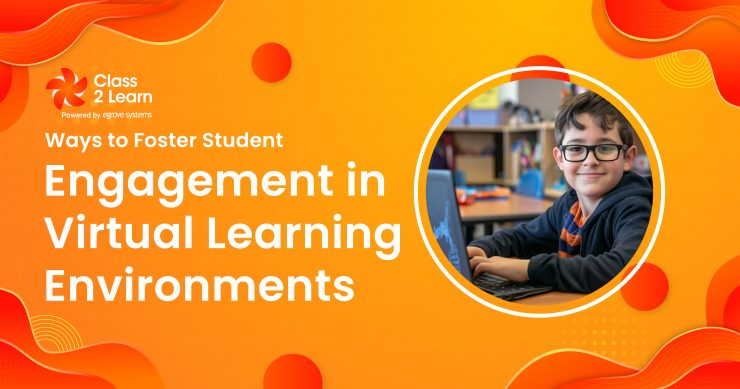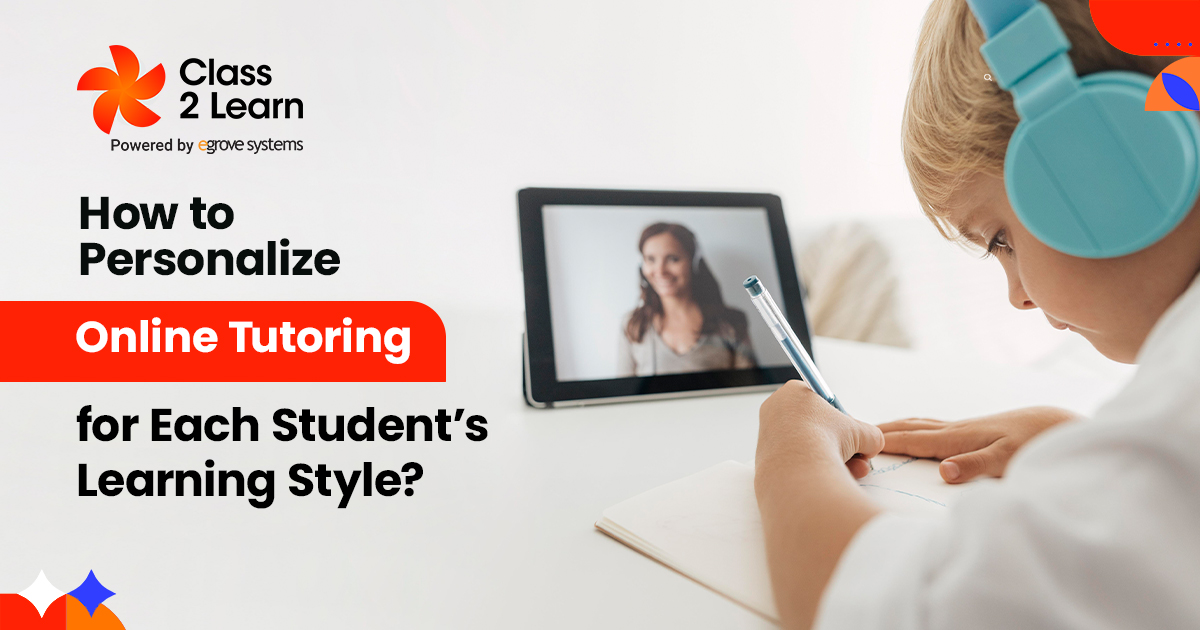Ways to Foster Student Engagement in Virtual Learning Environments
Virtual learning is an exciting area of education and professional training. It has revolutionized education for thousands of students by making learning accessible, affordable, and geographically transcending. For instance, globally, online courses have attracted 220 million people, and the online learning market is expected to touch the USD 325 Billion threshold by 2025.
However, the many merits of virtual learning are also complemented by a fair share of qualms, the most pertinent of which relates to student engagement. Engaging students is hard enough when in physical classrooms, so one can only imagine the relentless efforts and hardwork it takes to grasp the attention of students in a virtual setup.
Online learners can get easily distracted and lose interest or focus. This means that the concerned teacher is usually in for a long and stressful teaching session. But thankfully, there are certain strategies and online teaching tools through which it is possible to foster student engagement in virtual learning environments. How? Let us find out!
What is Student Engagement?
In a nutshell, student engagement is the focus, drive, and enthusiasm that students exhibit in a classroom. Teachers are able to notice it when it is present, and notice it even more when it is not. Student engagement in virtual classrooms has several benefits for both teachers and pupils. These include –
- Engagement ensures academic success for students
- It fosters emotional well-being of the students
- Student engagement is a cognitive investment
- Student engagement bolsters the confidence of teachers
- It helps teachers to understand what they are doing right and what they are doing wrong to captivate the interest of students
Now that we have got the basics out of the way, let us understand some of the foolproof strategies that facilitate student engagement in virtual classroom environments.
Top 5 Ways to Foster Student Engagement in Virtual Learning Environments
1.Use Engaging Learning Materials
The first thing you should do to engage students in virtual environments is to give students something more than a plain and basic lecture packed with facts and instructions. But, what are some of the ways that can be used to make learning materials interesting, especially in an online setup?
Well, you can find or prepare learning material regarding the topic that is more palatable and easier to digest. The goal is to make the online classroom more interactive and dialogue-based, and steer clear of long monologues. A few of the relevant strategies include –
- Use videos in your online classes, as they are proven to be valuable for student engagements. Humans are visual creatures, and thus, videos are bound to help with knowledge retention. A recent survey reveals that 94 percent of education professionals believe that videos increase student satisfaction and performance.
- Use varied media in your virtual classes. Remember to widen your horizons while teaching a batch of virtual learners. Do not limit yourself to simply through a virtual conference. Instead, dial in different forms of knowledge dissemination, whether it is using a digital whiteboard for presentation, dabbling into collective problem solving, playing podcasts, etc.
2.Use Fun and Engaging Online Tools
You can use a lot of fun and interesting online tools to facilitate student engagement. A few of the things that you can dabble into are –
- Emojis
Your class will be very familiar with emojis. So, why not bring them into the virtual classes to create a sense of familiarity and comfort for students. This helps to set the tone for a relaxed and interactive learning environment online.
- Live Polls
In-class live polls can be a quick and interesting way to stir up discussions, enable students to express their opinions and thoughts on a topic, and re-define the various trajectories that a particular topic can take.
- Virtual Whiteboards
Whiteboards do not have to be restricted to traditional, brick-and-mortar classrooms. You can use them in virtual learning environments, as well. Students can use them to make presentations, explain their thought process, or brainstorm in groups. Likewise, you, as a teacher, can use them in the same way as you would in person.
- Question Upvotes
Similar to live polls, question upvotes provide your students a say in the direction the classes take. This makes them more invested in topics and discussions.
3.Spider Web Discussion
Encourage students to lead their own discussions during live video chats. Before the online class commences, have students answer questions independently. During the class, they can share their responses as a starting point for broader class discussions. You can track the flow of conversion, thereby creating a spider web diagram to reflect on who talked, who listened, and who built on others’ ideas.
4.Read the Room
Of course, getting a clear sense of how focused or engaged your students are can be a challenge in a virtual setup, but reading the room is still a necessary skill for online classes. Thus, it is crucial to leverage engagement tools and analytics . For instance, reaction emojis can provide you a glimpse of how captivated your students are about the topic. Likewise, if the emojis dry up, then it is quite likely that your class is losing interest.
5.Organize Group Projects
Last but not least, organizing group projects is a crucial element of fostering student engagement in virtual learning environments. Well-strategized group work is a golden opportunity for students to polish their skills and learn to cooperate with one another. Likewise, peers tend to learn better from each other, and being part of a group will motivate and encourage them to complete the task.
One way to help kids is to assign digital whiteboard assignments that they may work on in groups while you monitor them all at the same time. This is a great way to have control over student cooperation and making sure that everyone is participating. Likewise, show students how they can gather virtually. You can ensure that they use tools like school LMS, Microsoft Teams, Canva, Google Docs, etc.
Wrapping It Up
So, there we have it, a crisp overview of the top 5 ways to foster student engagement in virtual learning steups.





Add comment